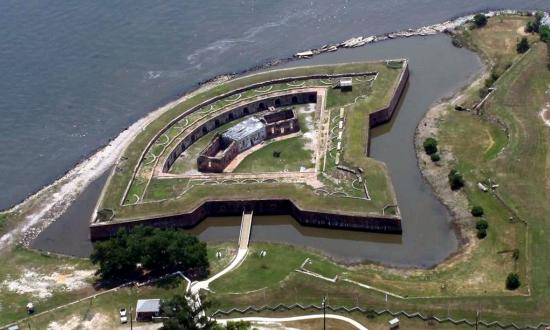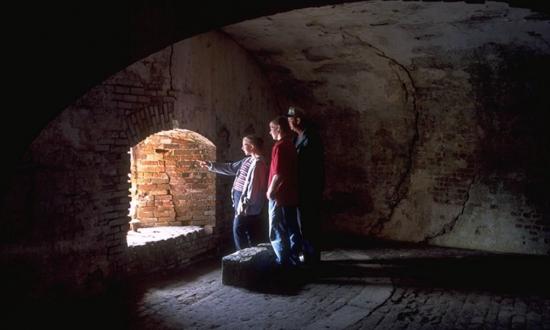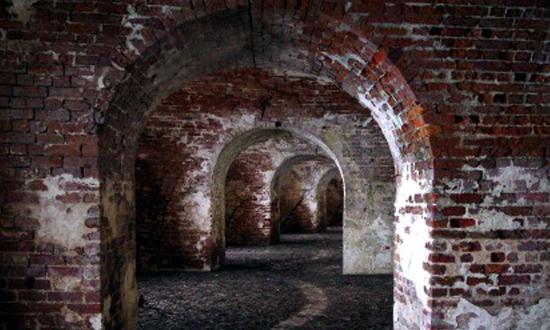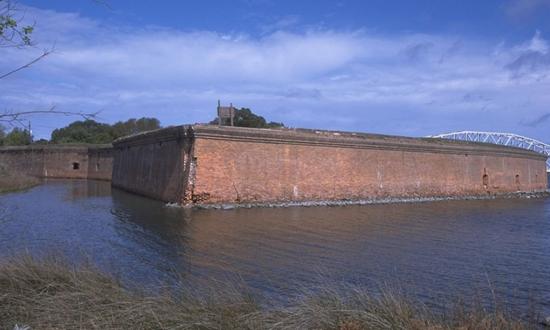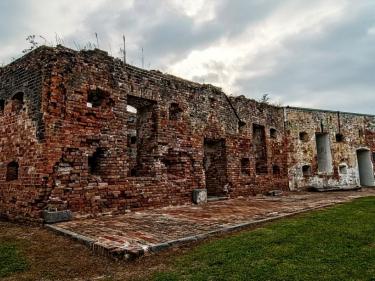
Fort Pike State Historic Site
27100 Chef Menteur Highway
New Orleans, LA 70129
United States
Fort Pike State Historic Site is currently closed to the public.
Begun in 1819 and completed in 1826, Fort Pike was named for the explorer and soldier General Zebulon Montgomery Pike (1779-1813) whose name is also attached to Pike's Peak in the Rocky Mountains. Fort Pike is the first of the Third System fortifications, a group of brick and masonry structures built between 1816 and 1867. The fort was designed to withstand attack from land or sea.
Although the United States survived the War of 1812, the British destruction of our nation's capital and their attack on New Orleans emphasized the weakness of our country's defense. To prevent a foreign invasion from occurring again, President James Monroe ordered the placement of an extensive coastal defense system. These new fortifications, together with existing ones, stretched along the entire Atlantic and Gulf coasts and protected strategic ports and rivers such as New Orleans and the Mississippi. Forts Pike and Macomb (also called Fort Wood) were two of six new masonry forts built in coastal Louisiana at this time. Together with Forts Jackson and St. Philip on the Mississippi River and Fort Livingston on Barataria Bay, these fortifications protected New Orleans from a seaborne invasion.
The original armament of Fort Pike consisted of 32-pounder and 24-pounder cannons; the exact number of each type is unknown. At various times the fort held other types of cannons. The wartime garrison was approximately 400 men; in peacetime it varied between one and 80 soldiers.
Fort Pike's role in the military affairs of the United States prior to the Civil War varied considerably. During the Seminole Wars in the 1830s, Fort Pike served as a staging area for many troops en route to Florida, and also as a collection point for hundreds of Seminole prisoners and their black slaves who were being transported to Oklahoma. Cannons were removed from some of the casemates to convert them to cells. At one point in this conflict, only 66 soldiers guarded 253 Indian and black prisoners.
Similarly, during the Mexican War in the 1840s, Fort Pike was a stopover for soldiers bound for Texas and Mexico. In between these wars, Fort Pike was largely abandoned and left in the care of a single ordnance sergeant.
In 1861, the silence of Fort Pike was broken. Before the actual start of the Civil War, the Louisiana militia captured the fort. Confederates held it until the Union forces took New Orleans in 1862, whereupon the Confederates evacuated Fort Pike. Union forces then reoccupied the fort, using it as a base for raids along the Gulf coast and Lake Pontchartrain area and as a protective outpost for New Orleans. The Union also used Fort Pike as a training center, where former slaves were taught to use heavy artillery. These troops became part of the United States Colored Troops, who played an important role in the outcome of many battles, including the siege at Port Hudson. Yet, in spite of all this activity, not a single cannonball was ever fired in battle from Fort Pike.
Fort Pike was again left to the care of an ordnance sergeant from 1871 until it was officially abandoned in 1890. In 1972 it was placed on the National Register of Historic Places, an honorary designation for significant historic sites.
Fort Macomb
Fort Macomb, a 19th-century United States brick fort listed on the National Register of Historic Places, is on Chef Menteur Pass and was constructed to protect New Orleans as part of President Monroe’s 3rd system of fortifications. The United States built the current brick fort in 1822 as Fort Wood. It was renamed Fort Macomb in 1851 after General Alexander Macomb, former Chief of Engineers and Commanding General of the US Army. The main works of Macomb and Pike are almost identical to each other (Fort Pike being the larger of the two) and the initial construction was taken on by the same contractors, James Bennett and Peter Morte. The fort saw the most of its military action during the Civil War when a Confederate States of America garrison took control of and occupied the fort early in the American Civil War. The Union regained control of the fort after the occupation of New Orleans. In 1867, the barracks caught fire, after which the fort was largely abandoned by the US Army. It was decommissioned in 1871. Fort Macomb is closed to the public.
